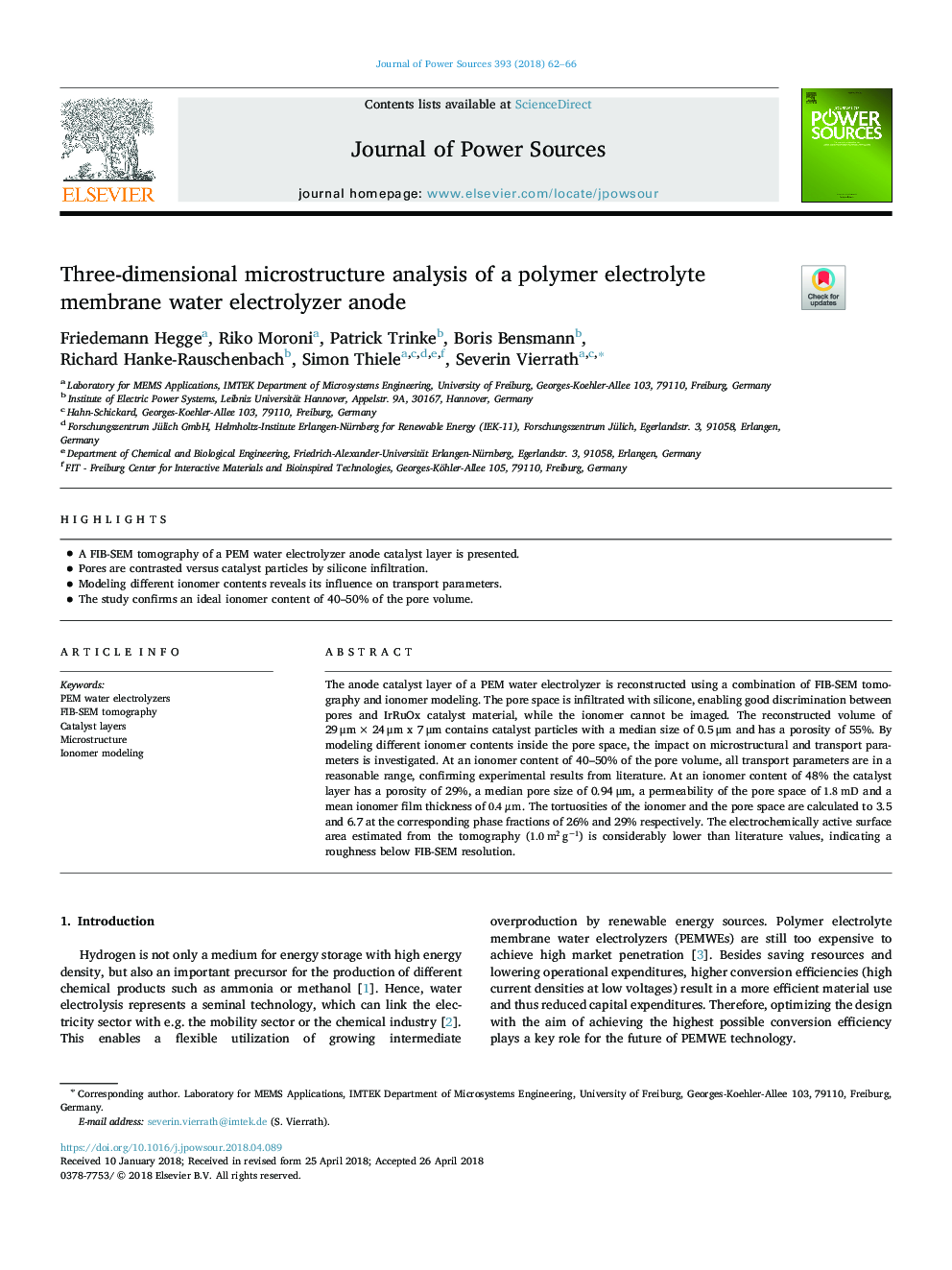| Article ID | Journal | Published Year | Pages | File Type |
|---|---|---|---|---|
| 7724965 | Journal of Power Sources | 2018 | 5 Pages |
Abstract
The anode catalyst layer of a PEM water electrolyzer is reconstructed using a combination of FIB-SEM tomography and ionomer modeling. The pore space is infiltrated with silicone, enabling good discrimination between pores and IrRuOx catalyst material, while the ionomer cannot be imaged. The reconstructed volume of 29â¯Î¼mâ¯Ãâ¯24â¯Î¼m x 7â¯Î¼m contains catalyst particles with a median size of 0.5â¯Î¼m and has a porosity of 55%. By modeling different ionomer contents inside the pore space, the impact on microstructural and transport parameters is investigated. At an ionomer content of 40-50% of the pore volume, all transport parameters are in a reasonable range, confirming experimental results from literature. At an ionomer content of 48% the catalyst layer has a porosity of 29%, a median pore size of 0.94â¯Î¼m, a permeability of the pore space of 1.8mD and a mean ionomer film thickness of 0.4μm. The tortuosities of the ionomer and the pore space are calculated to 3.5 and 6.7â¯at the corresponding phase fractions of 26% and 29% respectively. The electrochemically active surface area estimated from the tomography (1.0m2gâ1) is considerably lower than literature values, indicating a roughness below FIB-SEM resolution.
Related Topics
Physical Sciences and Engineering
Chemistry
Electrochemistry
Authors
Friedemann Hegge, Riko Moroni, Patrick Trinke, Boris Bensmann, Richard Hanke-Rauschenbach, Simon Thiele, Severin Vierrath,
